Dim
light, AWB...
| VX2000 (PD150, DSR250) |
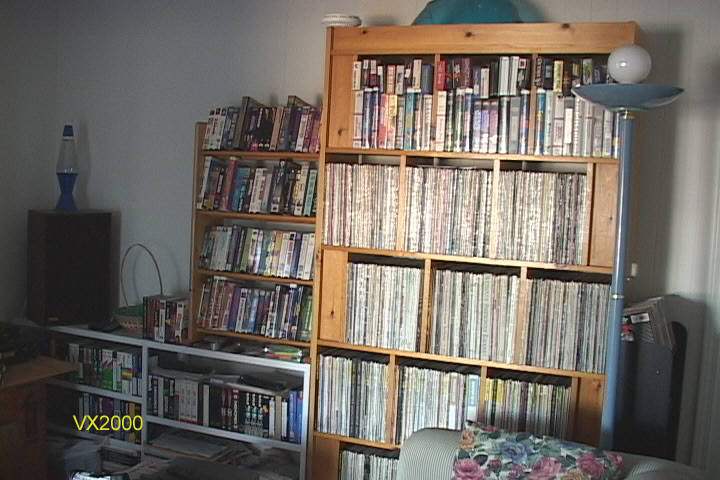 |
|
With gain to spare
at this light level, the VX2000 image is smooth (see wall, upper left), sharp, with good color, and with good blacks. |
| TRV900 |
 |
|
The TRV900 image is
less smooth and has inferior blacks compared with the VX2000 image in the same low light level, but it still has good (though less neutral) color. |
| TRV30 (TRV50, PC115, PC120) |
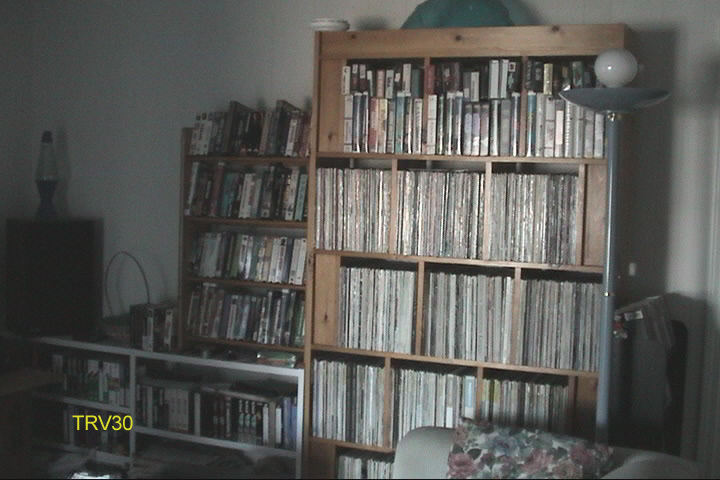 |
|
With gain at +18db,
the TRV30 image is still fairly smooth and sharp, with good color neutrality - but color saturation and tonal "brilliance" are poor. Turning off the stabilizer and using manual exposure with a one "notch" shift away from maximum brightness and/or using "portrait"-mode often improves the image quality with the TRV30 (see the last two images below for more). |
| PC100 (PC110, TRV20) |
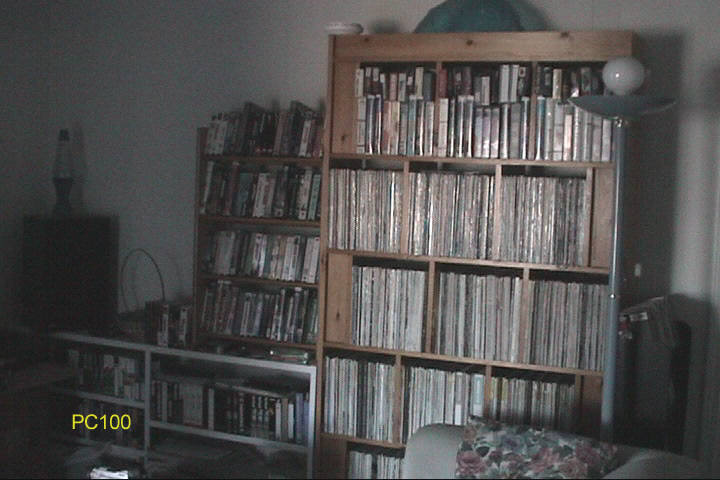 |
|
With gain at +18db,
the PC100 shows considerable color noise and poor color and brilliance. Turning off the stabilizer and/or using manual exposure with a one "notch" shift away from maximum brightness often improves the image quality. |
| PC9 (PC5, TRV11, TRV17, TRV18, TRV19, TRV22) |
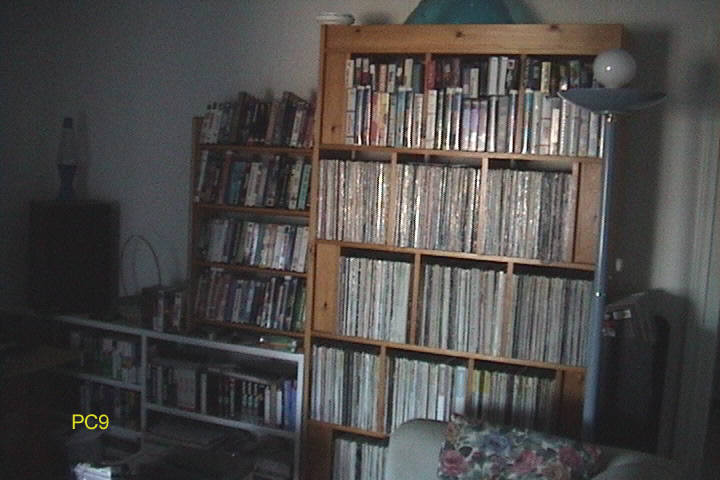 |
|
With gain at +18db, the
PC9 shows considerable color noise, but fair brilliance |
| PC9 (PC5, TRV11, TRV17, TRV18, TRV19, TRV22) |
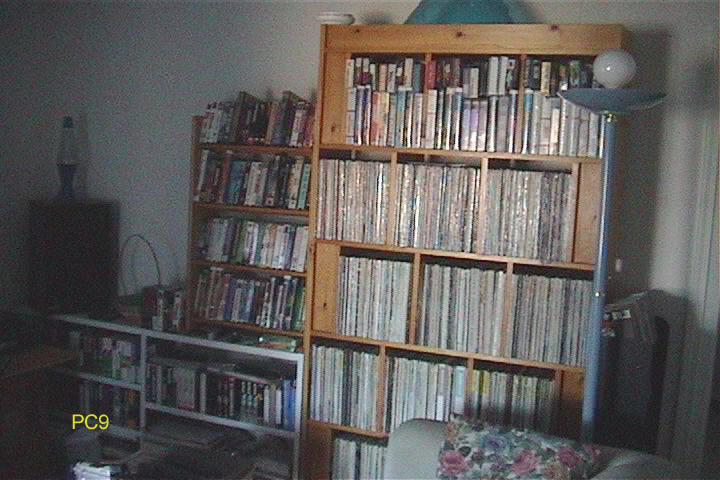 |
|
At the cost of increased color noise,
the PC9 picture shot at this light level can be improved using filters available in many good non-linear editors. (This example is at the practical limit, but in slightly brighter light, the results can be acceptable.) |
| TRV30 - low-light (different conditions from above) |
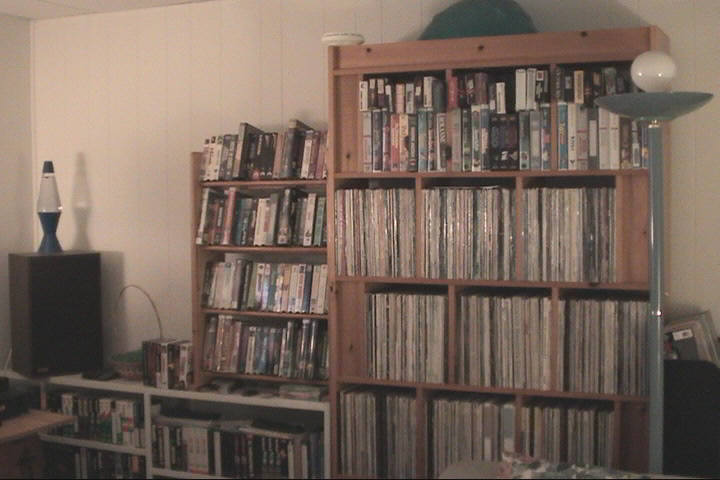 |
| Stabilizer on, AE on, standard program... |
| TRV30 - low-light |
 |
| Stabilizer off, ME on (-1, to move gain from +18db to +15db), or portrait program. |